Zero contact in two days and a 96-hour window rapidly closing in: What we know about missing Titanic sub
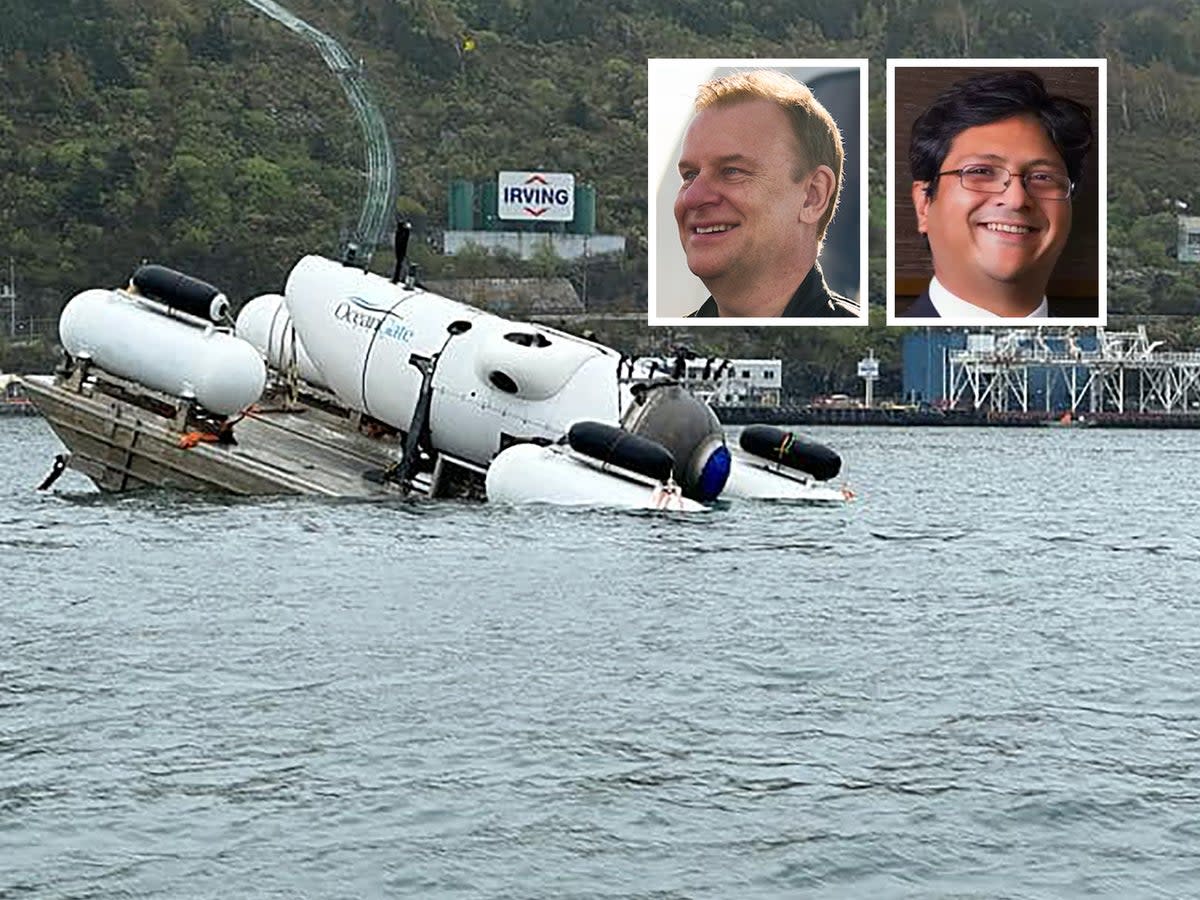
A British billionaire explorer, a Pakistani father and son, a French diver and the CEO of a submarine tourist trip company are in a race against time for their lives as the 96-hour window to save them from a missing underwater sub is closing in.
On Sunday morning, when OceanGate Expedition’s sub left its mother ship around 900 miles east of Cape Cod, Massachusetts, the five passengers hoped for a trip of a lifetime getting up close and personal with the wreckage of the Titanic.
Follow the latest updates on the missing Titanic submarine here
But, in a chilling echo of the fate of the doomed White Star Line vessel, the adventure took a dramatic turn.
Just one hour and 45 minutes into the journey, the sub lost contact with life above the surface.
Now, more than two days on, the five-person pod is nowhere to be found.
In a press conference on Tuesday afternoon, US Coast Guard Captain Jamie Frederick assured that authorities are doing everything possible to locate the missing vessel as the search intensified with more technology.
Mr Frederick confirmed that the vessel has “40 to 41 hours” of oxygen supply left, meaning it is expected to run out by 5.30am ET (10.30am GMT) on Thursday.
He also acknowledged that officials do not know if crews will be able to rescue the sub even if they do manage to find it before the oxygen runs out.
Here’s what we know so far:
What happened?
On Sunday morning (18 June), the Titan sub, owned by OceanGate Expeditions, set off on its excursion to the Titanic’s underwater grave with the research vessel the Polar Prince.
The expedition began with a 400-nautical-mile journey out into the Atlantic Ocean, about 900 miles off the coast of Cape Cod, Massachusetts.
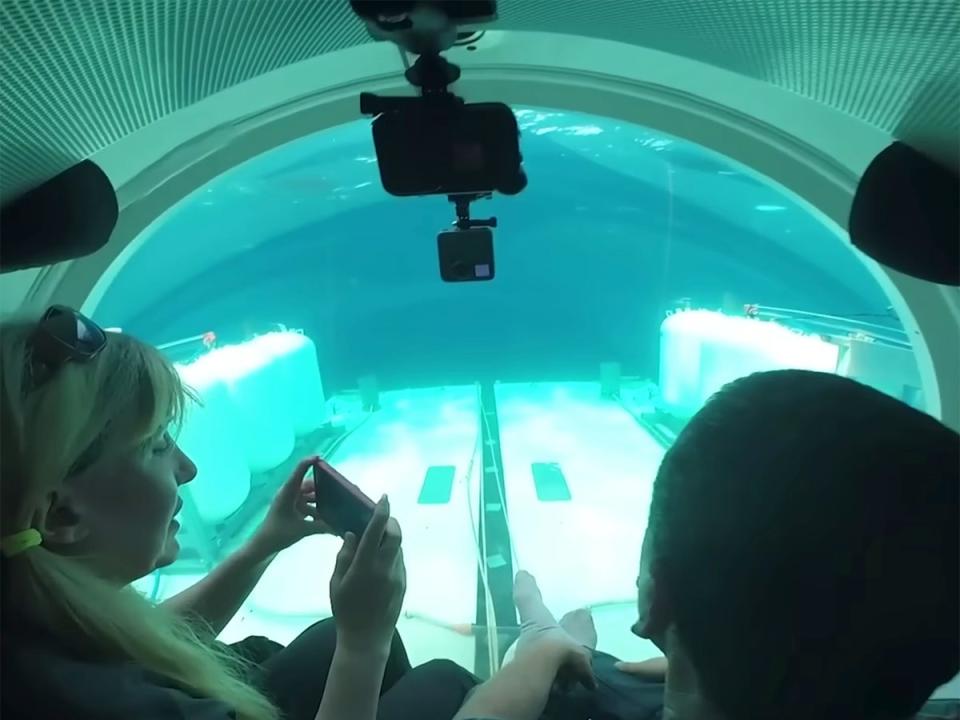
The submersible was then released from its mother ship and began its descent 13,000 feet below the water’s surface to the wreckage.
The vessel is supposed to transmit a signal back to the Polar Prince every 15 minutes but it lost contact after one hour and 45 minutes.
What happened to the sub and its occupants remains a mystery.
Former British Navy Rear Admiral Chris Parry told Sky News that the OceanGate Expeditions vessel could have fallen foul of a “catastrophic failure” or even have become tangled up in the debris of the famed shipwreck.
“There’s an optimistic option and that’s that it’s either lost an umbilical communication with the surface or indeed there’s been a malfunction and the submarine continues to operate but obviously out of contact with its mother ship,” he said.
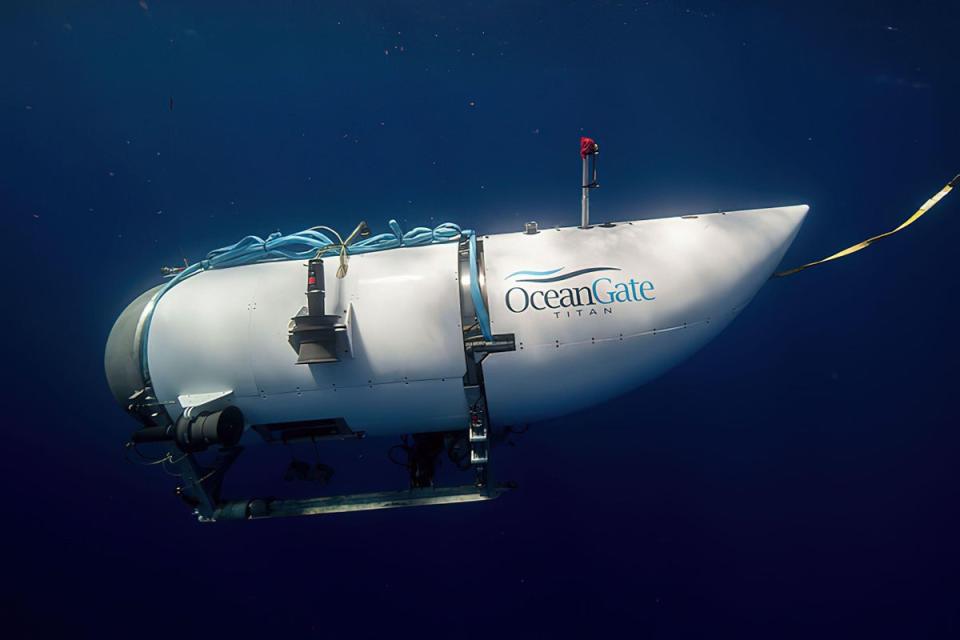
“Obviously on the other end of the scale there could have been an accident. It could have become entangled in the wreckage of the Titanic. It could indeed have had a catastrophic failure.
“The answer is we don’t know just yet. What we do know of course is the wreck site is off the grand banks, it’s a long way from anywhere and the nearest rescue facility will be on the East Coast of the United States.”
On Sunday, OceanGate Expeditions alerted the US Coast Guard that the sub was overdue and a huge search and rescue operation was launched.
Where did it go missing?
It is unclear where exactly the sub went missing but the Coast Guard said it was searching 900 miles east of Cape Cod – where the famed Titanic shipwreck lies beneath the surface.
The Titanic shipwreck sits approximately 12,500 feet at the bottom of the Atlantic Ocean, about 380 nautical miles south of Newfoundland, Canada and 1,240 nautical miles east of New York City. The shipwreck’s coordinates are 41º43’32”N, 49º56’49”W.
The Coast Guard said it was searching in water depth of “roughly 13,000 feet”.
Rear Admiral John Mauger told a press conference in Boston on Monday afternoon that it is “a remote area and it is a challenge to conduct a search in that remote area”.
“But we are deploying all available assets to make sure we can locate the craft and rescue the people on board,” he said.
OceanGate said in a statement: “Our entire focus is on the crewmembers in the submersible and their families”.
It added that the company is “deeply thankful for the extensive assistance we have received from several government agencies and deep sea companies in our efforts to establish contact with the submersible.”
At Tuesday’s press conference, US Coast Guard Captain Jamie Frederick confirmed that there is still no sign of the Titan.
Even if the vessel is located under the surface of the ocean, concerns are mounting that huge multi-agency, international search and rescue operation will be helpless to actually retrieve it and save the five men inside.
When asked if a rescue will be possible if found, Cpt Frederick admitted that he couldn’t give “the answer” to that.
“I don’t know the answer to that question but we will do everything in our power to affect the rescue,” he said.
When pressed about any plans to rescue the sub if it is successfully located, Cpt Frederick continued to skirt around the question – insisting that they were focused first on finding the vessel.
“All efforts are on finding the sub... we have the nation’s best experts... if we get to that point,” he said, later adding that if the sub is located, the team will decide the “best course of action to recover” it.
The US Coast Guard official gave the damning estimate that those on board the vessel now have just 40 hours of oxygen supply left inside the sub.
While he hammered home that it is “an estimate”, Cpt Frederick said that “we’re approximately 40 to 41 hours left”.
Under that estimate, the oxygen supply will run out by 5.30am ET (10.30am GMT) on Thursday.
The world’s deepest under sea search and rescue mission
Multiple agencies, multiple nations and both private and public entities are desperately working together to locate and rescue the five missing on board the Titan submersible.
It’s a search unlike anything that has ever been executed before – making this the deepest under sea search and rescue mission in the world.
In Monday’s press conference, Rear Adm Mauger revealed that the rescue efforts are being led by the US Coast Guard in Boston.
The Coast Guard had deployed two C-130 aircrafts, the Canadian Coast Guard one C-130 aircraft and one P-8 aircraft, the New York National Guard one C-130 aircraft and a commercial operator was helping out with on-surface equipment.
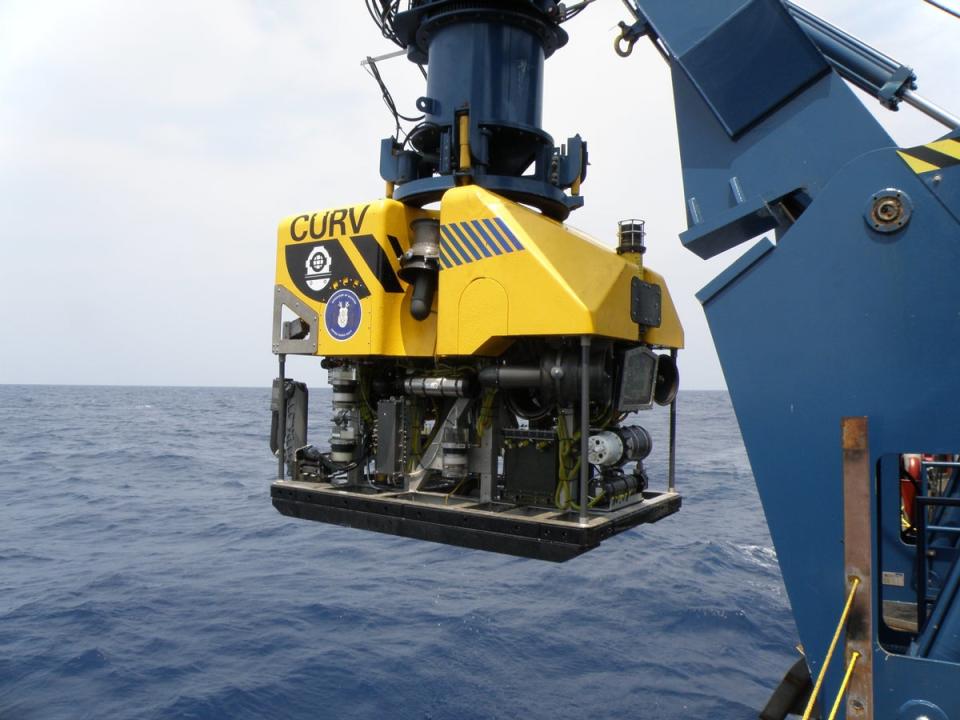
The Coast Guard also launched sonar buoys and ships equipped with sonar technology to try to locate the missing watercraft.
Mr Mauger said that “adding to the complexity of this case is the fact that this was a submersible vessel” so there is a need look both on the surface of the water and far below.
But, despite the multi-agency mission, an OceanGate Expeditions adviser has claimed that the rescue efforts have been hampered by red tape, bureaucracy, and a lack of urgency by the US government.
David Concannon, an attorney and explorer who had a lucky escape when he pulled out of the adventure at the last minute, told NewsNation on Monday night that critical equipment that could help recover the missing Titan vessel is currently thousands of miles away in the Guernsey Channel Islands.
The equipment is ready and waiting to be sent to the Atlantic Ocean to help locate the submersible, but can’t go anywhere until the US government authorises it.
He slammed officials for allegedly holding up these efforts, saying that he was being met with out of office emails as he tried to get official paperwork in order.
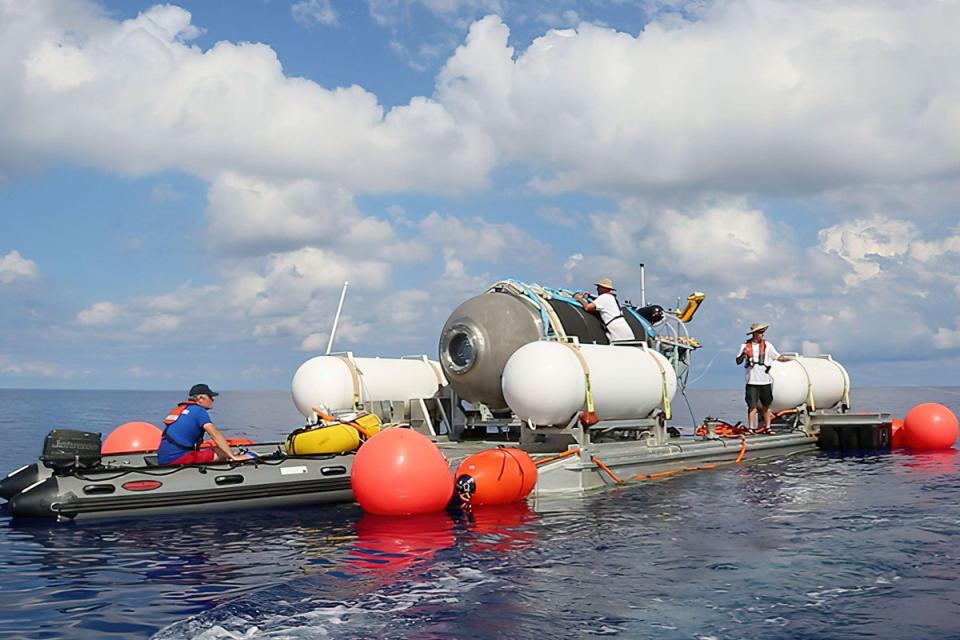
“(They are) the same group, the experts, that did the advanced survey of the Titanic last year,” he said.
“They are mobilised. They’re sitting on the tarmac, ready to go. We have a ship off Newfoundland that is ready to take them to the site.”
He added: “This equipment has been on the tarmac for hours. When I communicate with the U.S. government, I get ‘out of office’ replies, not from everyone, but from key people that have a signoff on this.
“That’s unacceptable. I don’t want to discourage the government officials that are helping because they’re doing their jobs, but we need to do it quicker.”
With the clock ticking until the vessel runs out of oxygen, Mr Concannon hammered home that there isn’t any time to waste.
“We need to move. We do not have minutes or hours. We need to move now,” he said. “We have people whose lives are at stake. You have to move. We have assets that are ready to go and they’re sitting and waiting.”
Who are the five missing?
Desperate friends and family members confirmed their loved ones were on board the vessel as the deepest under sea rescue operation in world history unfolded in the Atlantic Ocean.
Hamish Harding, who has previously travelled on the Challenger Deep to the bottom of the ocean and on Jeff Bezos’ Blue Origin into space, had taken to Facebook on Saturday to announce that he was joining OceanGate Expeditions for its Titanic mission this week.
“I am proud to finally announce that I joined OceanGate Expeditions for their RMS TITANIC Mission as a mission specialist on the sub going down to the Titanic. Due to the worst winter in Newfoundland in 40 years, this mission is likely to be the first and only manned mission to the Titanic in 2023,” Mr Harding wrote, alongside an image of him signing a card reading Titanic Mission V.

“A weather window has just opened up and we are going to attempt a dive tomorrow. We started steaming from St Johns, Newfoundland, Canada yesterday and are planning to start dive operations around 4am tomorrow morning. Until then we have a lot of preparations and briefings to do.
“The team on the sub has a couple of legendary explorers, some of which have done over 30 dives to the RMS Titanic since the 1980s including PH Nargeolet. More expedition updates to follow IF the weather holds!”
He has not posted online since.
On Monday – as news of the missing submersible broke – Mr Harding’s stepson Brian Szasz confirmed that his stepfather was on board the vessel when it went missing.

“Hamish Harding, my step father, has gone missing on submarine. Thoughts and prayers,” he wrote on Facebook, sharing family photos and articles.
“Thoughts and prayers for my Mom and Hamish Harding,” he added.
In a follow-up post, he added: “Thoughts and prayers for my stepfather Hamish Harding as his submarine has gone missing exploring Titanic. Search and rescue mission is underway.”
The father-of-two is a seasoned explorer and holds three Guinness World Records, including the longest duration at full ocean depth by a crewed vessel when in March 2021, he and ocean explorer Victor Vescovo dived to the lowest depth of the Mariana Trench. In June 2022, he went into space on Blue Origin’s New Shepard rocket.

A friend – and fellow Titanic expert – Larry Daley confirmed to CBC that French diver Paul-Henri Nargeolet was also on the vessel. Mr Nargeolet is described by OceanGate as the “Titanic’s greatest explorer” and has done 35 dives in the submersible.
Shahzada Dawood, a 48-year-old businessman and one of the richest people in Pakistan, and his son Sulaiman Dawood, 19, were also on board the vessel to visit the wreckage of the Titanic.
The Dawood family released a statement about the father and son saying: “We are very grateful for the concern being shown by our colleagues and friends and would like to request everyone to pray for their safety.”

The fifth person was confirmed to be OceanGate Expeditions CEO Stockton Rush, in a statement by the company on Tuesday afternoon.
OceanGate offers excursions to shipwrecks and other deep-sea voyages for paying customers. In recent years, trips to view the Titanic shipwreck have become increasingly popular.
The Titanic sank in 1912 after hitting an iceberg while on its maiden voyage from Southampton, England, to New York, New York. Of the 2,200 people onboard, more than 1,500 died.
The US passed the Titanic Maritime Memorial Act in 1986, marking the RMS Titanic as an international maritime memorial, allowing for reasonable research, exploration and appropriate salvage activities.


